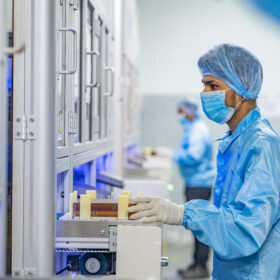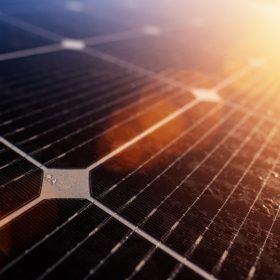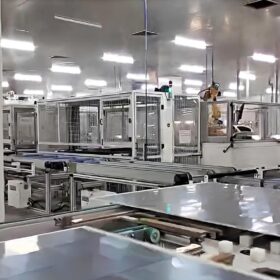India’s solar cell manufacturing capacity is set to touch 50-55 GW by fiscal 2027, up five-fold from 10 GW at the end of fiscal 2024, says a new report by Crisil Ratings. The analysts said the capacity addition will be propelled by the government’s policy thrust to reduce PV cell and module imports.
“The expansion will entail a capital expenditure (capex) of INR 28,000-30,000 crore, likely to be funded through a 70:30 debt-equity mix. That said, healthy balance sheets and robust cash accrual will support credit quality,” stated Crisil Ratings, which studied four domestic cell manufacturers that accounted for 54% of total cell manufacturing capacity as on March 31, 2024.
The ‘Make in India’ initiative, bolstered by policy measures aimed at reducing imports of cells and modules, will drive backward integration strategies of module manufacturers, leading to higher domestic cell capacity.
India’s module manufacturing capacity hit 60 GW by March 2024 from 7 GW in March 2020, driving module imports down to 25% of the total consumption this fiscal from 45% in the last. However, import of cells – a key input for module manufacturing –remains high at 80% with China as the major source. The inadequate supply of domestic cells could increase dependence on imports with the renewable capacity addition; Crisil Ratings expects India to add 60-65 GW of solar capacity over the two fiscals by 2027.
Ankit Hakhu, Director, Crisil Ratings, said, “To boost domestic demand and cell making capacity, the government has mandated use of cells only from its approved list of cell manufacturers (ALCM) in open access and net metering projects and projects where it is either providing funding assistance or acting as a counterparty. [ALCM is set for implementation from June 1 this year.] Among other measures, the Production-Linked Incentive (PLI) scheme and domestic content requirement, too, will invigorate local manufacturing. All these have led to cell capacity expansion announcements of 45-50 GW, which will take India’s overall cell making capacity to ~55 GW over the next two fiscals.”
With domestically manufactured cells, potentially 70-80% of the module cost can get captured within India (vis-à-vis only 40-50% without it). Plus, the proportion of domestic module capacity supported by domestic cell capacity is expected to increase to more than 50% from less than 15% in fiscal 2024.
Ankush Tyagi, Associate Director, Crisil Ratings, said, “Despite the sizeable capex, the average annual capex intensity will not rise materially — projected at 1.3-1.5 times over the three years till fiscal 2027 vis-à-vis 1.2 times over the past three fiscals. This will be supported by the expansion in the earnings base driven by the increased module capacity in the past few years and robust operating margins backed by ALMM [Approved List of Models and Manufacturers] implementation. Given the healthy demand outlook, the payback period for the capex is expected to be healthy, at 4-5 years.” [Only the modules and cells included in ALMM List I and II are eligible for use in government or government-assisted projects, open access projects and net-metering projects, including projects set up for sale of electricity to the government. Currently, only domestic manufacturers are registered under ALMM.]
That said, at current price levels, the domestically manufactured cells are expected to be 80-90% pricier than imported cells because of the higher conversion cost of wafers to cells, given the lower economies of scale in India initially and dumping by China. Thus, while the expected benefits of PLI and other government schemes may enable manufacturers to partially absorb higher costs, solar project developers may still face some increase in project cost. Therefore, continued policy support in the form of non-tariff barriers such as ALCM and ALMM is crucial to prop up demand for domestically manufactured cells and modules.
This content is protected by copyright and may not be reused. If you want to cooperate with us and would like to reuse some of our content, please contact: editors@pv-magazine.com.









1 comment
By submitting this form you agree to pv magazine using your data for the purposes of publishing your comment.
Your personal data will only be disclosed or otherwise transmitted to third parties for the purposes of spam filtering or if this is necessary for technical maintenance of the website. Any other transfer to third parties will not take place unless this is justified on the basis of applicable data protection regulations or if pv magazine is legally obliged to do so.
You may revoke this consent at any time with effect for the future, in which case your personal data will be deleted immediately. Otherwise, your data will be deleted if pv magazine has processed your request or the purpose of data storage is fulfilled.
Further information on data privacy can be found in our Data Protection Policy.